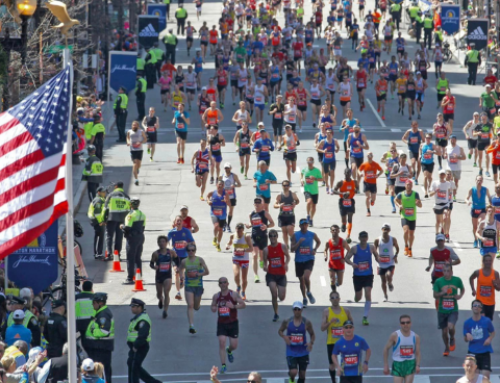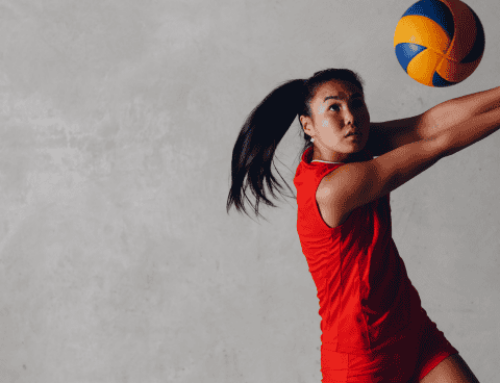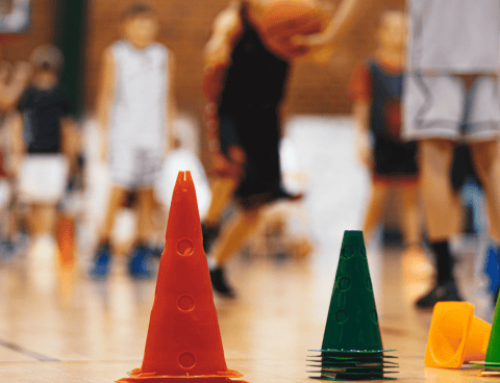5 Pieces of Equipment Needed in Your Speed Training Toolbox
If getting faster is your goal, obviously your main mode of training needs to be speed workouts. (See the STACK Guide to Getting Faster.) But simply running sprints is not enough to enhance your performance. To really improve your times, whether you’re a sprinter or a football player, start incorporating training equipment into your routine.
To be effective for sprinting, a piece of equipment doesn’t need to be complex or expensive; it just needs to work. As in other forms of training, do not overuse the equipment. You wouldn’t perform five straight days of dumbbell shoulder exercises, would you?
Here are five pieces of equipment you need to include in your speed workouts. (If you don’t have access to any equipment, try this speed workout.)
Speed Ladder
Although it lies flat on the ground, the speed ladder is the best method to control foot placement and increase foot speed and foot turnover.
- With a 10-meter run-in, sprint through the ladder placing one foot in each gap
- With a 10-meter run-in, place both feet in each gap—right foot first, then left foot first
- Repeat these two exercises performing Butt Kicks and High Knees
Want more drills? Check out STACK’s Speed Ladder Exercise Library.
Parachute and/or Pull Sled
Both of these resistance devices attach with a harness and help resist forward linear motion—basically the faster the motion, the more resistance. Parachutes are relatively inexpensive; sleds tend to be a little pricey, but are best for acceleration training. I use both resistance devices for the first few sets of exercises, then always finish with no resistance. Here are two examples:
Parachute
Sets/Reps: 3×3 20-meter flys with a 30-meter run-in, at maximum speed, with two minutes rest between reps and full recovery between sets
- Perform first two reps of each set with the parachute
- Perform final rep without the parachute, so you will feel the over-speed with no resistance
Sled
Sets/Reps: 3×3 30-meter accelerations, with two minutes rest between reps and 10 to 15 minutes between sets
- First set: place heavy weight on the sled, as appropriate to your fitness level (roughly 30% of your body weight at 100% effort)
- Second set: weight at 10 to 15% of your body weight
- Third set: completely unresisted
High-Speed or Slow-Motion Camera (Coach’s Eye)
Slow motion cameras are available for around $300, like this one from Casio on Amazon, which is similar to the one I use. It’s perfect for high-speed work, because it enables slow motion playback of maximum speed sprinting to reveal necessary form corrections.
If that simply isn’t in your current budget, the coach’s eye app, available for most smart phones, is a good alternative. It allows video, playback in slow motion, annotation, voiceovers and sharing, all quickly and easily. The image quality is only as good as your smart phone’s video camera, but thumbwheel control makes it extremely useful.
Pull Harness
The pull harness is a partner system, where you drive against resistance provided by a partner. More complex versions (e.g., Bullet Belts) allow the partner to release you to freely accelerate after a short time. This piece of equipment is used primarily in the warm-up or preparation phase of a speed session, as a lead-in to acceleration and maximum speed drills.
Weight Vest
Most weight vests have several pouches, so you can vary the number of weights you carry and evenly distribute the load around your upper torso. This allows proper sprint mechanics against the resistance. Overloading with the vest compels you increase the amount of force production during a foot strike. Just keep the weight low enough to prevent your sprint mechanics from breaking down. A typical training session using a weight vest should be similar to one using a parachute.
RECOMMENDED FOR YOU
MOST POPULAR
5 Pieces of Equipment Needed in Your Speed Training Toolbox
If getting faster is your goal, obviously your main mode of training needs to be speed workouts. (See the STACK Guide to Getting Faster.) But simply running sprints is not enough to enhance your performance. To really improve your times, whether you’re a sprinter or a football player, start incorporating training equipment into your routine.
To be effective for sprinting, a piece of equipment doesn’t need to be complex or expensive; it just needs to work. As in other forms of training, do not overuse the equipment. You wouldn’t perform five straight days of dumbbell shoulder exercises, would you?
Here are five pieces of equipment you need to include in your speed workouts. (If you don’t have access to any equipment, try this speed workout.)
Speed Ladder
Although it lies flat on the ground, the speed ladder is the best method to control foot placement and increase foot speed and foot turnover.
- With a 10-meter run-in, sprint through the ladder placing one foot in each gap
- With a 10-meter run-in, place both feet in each gap—right foot first, then left foot first
- Repeat these two exercises performing Butt Kicks and High Knees
Want more drills? Check out STACK’s Speed Ladder Exercise Library.
Parachute and/or Pull Sled
Both of these resistance devices attach with a harness and help resist forward linear motion—basically the faster the motion, the more resistance. Parachutes are relatively inexpensive; sleds tend to be a little pricey, but are best for acceleration training. I use both resistance devices for the first few sets of exercises, then always finish with no resistance. Here are two examples:
Parachute
Sets/Reps: 3×3 20-meter flys with a 30-meter run-in, at maximum speed, with two minutes rest between reps and full recovery between sets
- Perform first two reps of each set with the parachute
- Perform final rep without the parachute, so you will feel the over-speed with no resistance
Sled
Sets/Reps: 3×3 30-meter accelerations, with two minutes rest between reps and 10 to 15 minutes between sets
- First set: place heavy weight on the sled, as appropriate to your fitness level (roughly 30% of your body weight at 100% effort)
- Second set: weight at 10 to 15% of your body weight
- Third set: completely unresisted
High-Speed or Slow-Motion Camera (Coach’s Eye)
Slow motion cameras are available for around $300, like this one from Casio on Amazon, which is similar to the one I use. It’s perfect for high-speed work, because it enables slow motion playback of maximum speed sprinting to reveal necessary form corrections.
If that simply isn’t in your current budget, the coach’s eye app, available for most smart phones, is a good alternative. It allows video, playback in slow motion, annotation, voiceovers and sharing, all quickly and easily. The image quality is only as good as your smart phone’s video camera, but thumbwheel control makes it extremely useful.
Pull Harness
The pull harness is a partner system, where you drive against resistance provided by a partner. More complex versions (e.g., Bullet Belts) allow the partner to release you to freely accelerate after a short time. This piece of equipment is used primarily in the warm-up or preparation phase of a speed session, as a lead-in to acceleration and maximum speed drills.
Weight Vest
Most weight vests have several pouches, so you can vary the number of weights you carry and evenly distribute the load around your upper torso. This allows proper sprint mechanics against the resistance. Overloading with the vest compels you increase the amount of force production during a foot strike. Just keep the weight low enough to prevent your sprint mechanics from breaking down. A typical training session using a weight vest should be similar to one using a parachute.













